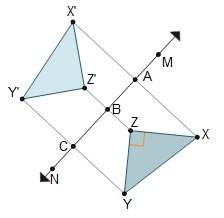
Mathematics, 14.12.2019 14:31, maxi12312345
The measure of one angle is thirteen less than five times the measure of another angle. the sum of the measures of the two angles is 140 degrees. determine the measure of each angle in degrees

Answers: 1
Other questions on the subject: Mathematics


Mathematics, 22.06.2019 02:30, reneewilliams20
Alex buys a home for $276,400. his home is predicted to increase in value 3.5% each year. what is the predicted value of alex’s home in 25 years? a. 621,357 b. 635,191 c. 653,201 d. 673,415
Answers: 1


Mathematics, 22.06.2019 03:00, kittenlover5031
In this problem, we explore the effect on the standard deviation of multiplying each data value in a data set by the same constant. consider the data set 14, 6, 8, 15, 15. (a) use the defining formula, the computation formula, or a calculator to compute s. (round your answer to one decimal place.) s = 4.28 (b) multiply each data value by 3 to obtain the new data set 42, 18, 24, 45, 45. compute s. (round your answer to one decimal place.) s = 12.83 (c) compare the results of parts (a) and (b). in general, how does the standard deviation change if each data value is multiplied by a constant c? multiplying each data value by the same constant c results in the standard deviation remaining the same. multiplying each data value by the same constant c results in the standard deviation being |c| times as large. multiplying each data value by the same constant c results in the standard deviation increasing by c units. multiplying each data value by the same constant c results in the standard deviation being |c| times smaller. (d) you recorded the weekly distances you bicycled in miles and computed the standard deviation to be s = 3.8 miles. your friend wants to know the standard deviation in kilometers. do you need to redo all the calculations? yes no given 1 mile ≠1.6 kilometers, what is the standard deviation in kilometers? (enter your answer to two decimal places.)
Answers: 1
Do you know the correct answer?
The measure of one angle is thirteen less than five times the measure of another angle. the sum of t...
Questions in other subjects:




Business, 02.01.2020 21:31













